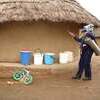Shrimp-like tanaids mimic hermit crabs
22 December 2020 | Story Helen Swingler. Read time >10 min.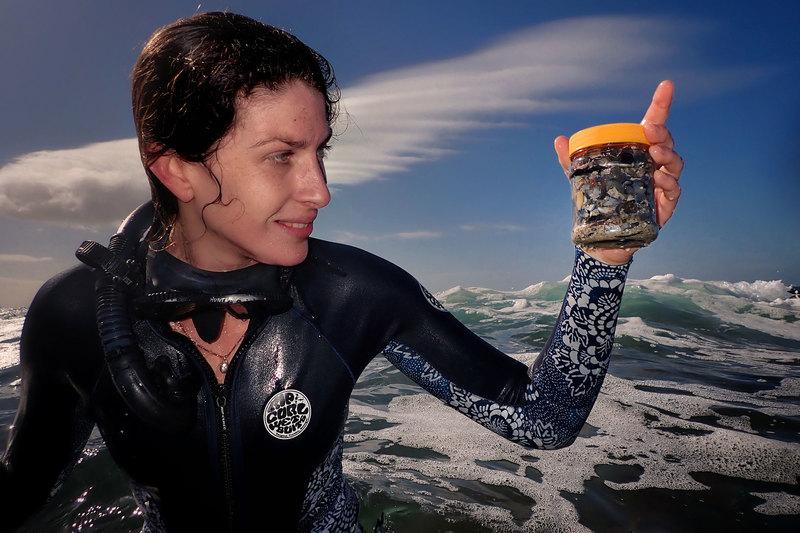
University of Cape Town (UCT) marine biologist Dr Jannes Landschoff describes it as “an intriguing little animal” that lives like a hermit crab but isn’t a crab. Unlike its fellows, this tiny, shrimp-like tanaid also chooses to bed down in empty gastropod shells. A new paper by Dr Landschoff and lead author, UCT master’s student Rouane Brokensha, sheds light on how this miniscule animal is adapted to shell life.
The hermit tanaid was last seen around our coastline 60 years ago when it was partly described by UCT marine biology luminary Professor Alec Brown. It was Landschoff and Brokensha, then a second-year biology student, who “rediscovered” the hermit tanaid (Pagurapseudes dentatus) four years ago while scouting under boulders in Wooley’s Tidal Pool, False Bay.
Landschoff’s doctoral thesis was on South African hermit crabs, but among the myriad scurrying hermit crabs was a strange creature. They had no idea what they were looking at but back in the laboratory Landschoff’s mentor and PhD supervisor, Emeritus Professor Charles Griffiths, identified their specimen as a tanaid, a bottom-dwelling marine and brackish-water shrimp-like crustacean.
Tanaids are found worldwide but Pagurapseudes dentatus, the shell-inhabiting tanaid, is the only known South African species of this “inconspicuous group” of crustaceans to make its home in the empty shells of sea snails. As far as is known, these little animals are endemic to the Western Cape and distributed across False Bay. They have also been seen on the Atlantic side of the Cape Peninsula, said Brokensha, who subsequently based her honours thesis on the tiny crustacean.
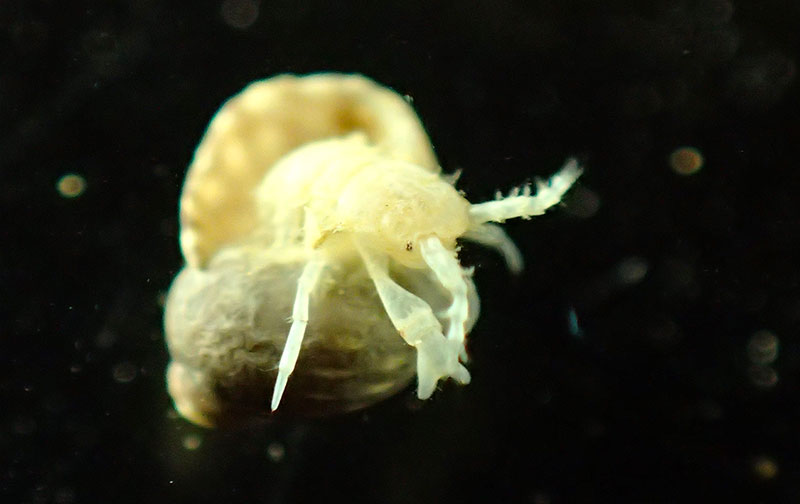
That’s when the real detective work began to uncover more about these lesser known marine animals.
“After we did a detailed search of old literature, we seemed to have an answer,” said Landschoff.
“In 1956 a student called Alec Brown described a species called Pagurapseudes dentatus [first named Kalliapseudes dentatus] in a short taxonomic account. Much later, Brown became a distinguished marine biologist, professor and head of the Department of Zoology at UCT. He is known as the pioneer of sandy beach ecology in South Africa, especially on the southern Peninsula, and published more than 200 papers. Brownʼs account of this species was one of his first scientific papers.”
However, his description was based on only one male specimen from False Bay and incomplete in many ways; it was poorly illustrated and did not describe the female or the juvenile stages. Neither was information provided about its habitat, said Brokensha.
But that has changed with the recent publication of Brokensha’s paper, “Redescription and notes on the ecology of Pagurapseudes dentatus (Brown, 1956) (Peracarida: Tanaidacea), a shell inhabiting tanaid from South Africa”, in the Journal of Crustacean Biology. The paper redescribes the crustacean and details its unique lifestyle for the first time. Brokensha’s co-authors are Landschoff, Emeritus Professor Griffiths and Associate Professor Anton du Plessis (Stellenbosch University).
“The two orders would arguably be as distant to each other as humans would be to giraffes.”
“These are commonly found creatures and play an important role in the ocean sediments where they are normally free-living,” said Landschoff. “And yet our hermit tanaids were sitting in shells, doing the same thing that hermit crabs do!”
Though they share the same taste in housing as hermit crabs, hermit tanaids are a whole different order in the class of crustacea.
“The two orders would arguably be as distant to each other as humans would be to giraffes,” said Landschoff. “None of us knew that tanaids had such complex adaptations for living in shells.”
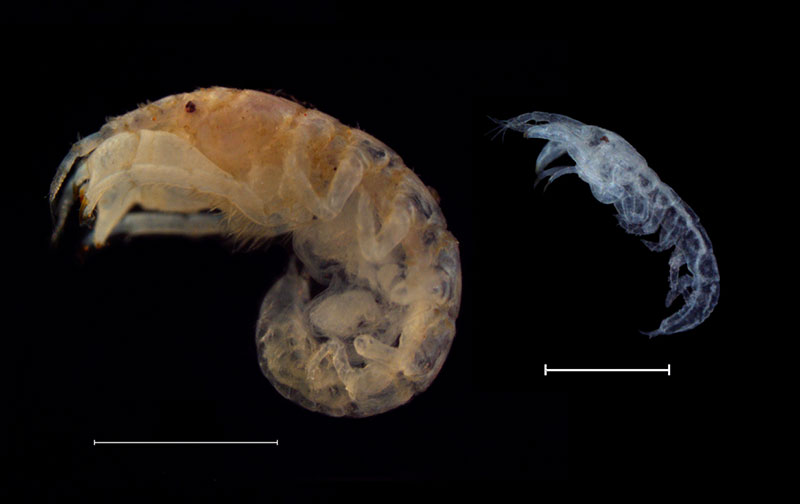
“We were able to study which shells the tanaid prefers to occupy, giving us a basic understanding of the creature’s ecology. This also opens questions of the tanaid’s co-existence with hermit crabs.”
Building a picture
At 2 mm to 3 mm long, the tanaids are very small, and examining them requires large magnifications. The gateway to Brokensha’s honours research on the little creature was through the microscope as well as some sophisticated nano-computed tomography (nano-CT) technology, which allowed Brokensha to visualise the crustacean in its borrowed gastropod shell habitat.
Landschoff used nano-CT technology for his PhD to examine delicate hermit crabs.
“X-ray computed tomography scanning is a technique that is well known in the medical field, but it can also be applied to very small animals to reveal some of their innermost secrets,” he said.
He had previously worked with co-author Du Plessis at the CT Scanning Facility at Stellenbosch University.
“Together with Anton, we were able to produce some intriguing imagery of how the hermit tanaids sit inside their shells.”
“By using modern technology, structural details too small to see can be displayed.”
The pictures showed how these animals have adapted to their unusual lifestyle. Features such as the tiny sucker spines on its limbs allow a hermit tanaid to suck onto and position itself within its chosen shell.
Brown had missed those details in his early description.
For Brokensha, it meant hours of careful dissection – the tiniest mouthparts are only a fraction of a millimetre long – and drawing to be able to describe it.
“So little is known about these creatures that basic taxonomy parameters such as sex and feature variation were challenging to determine,” she said. “But lab work gives me a road map to the bigger picture which is observed in nature when doing field work.
“Rouane went into great detail in her work; one could call it a very deep level of nature tracking.”
“There are times when the detail necessary for scientific work results in prolonged periods indoors slogging away with data or ethanol-preserved specimens. These times can feel like a forced disconnect from the ocean and the passion which first drew you to this work. As always, the answer is balance but when academic achievement demands all your time, balance can be difficult.”
Morphological work at this scale is challenging, Landschoff confirmed.
“Rouane went into great detail in her work; one could call it a very deep level of nature tracking. This takes time to learn. It also takes a lot of patience and dedication to acquire these skills and to do this work, particularly when done for the first time,” said Landschoff, who penned a blog on the creature on the Sea Change Project website.
“In the end we were certain enough that this really was the same species.”
Passion and fascination
The meticulous lab work became an extension of Brokensha’s fascination for things marine. She is both a diver and marine biologist, a marriage of her interests. As a diver, she has spent many hours lost in the marine world, “drawn to understanding that power of life and death and renewal connected across the planet by water”.
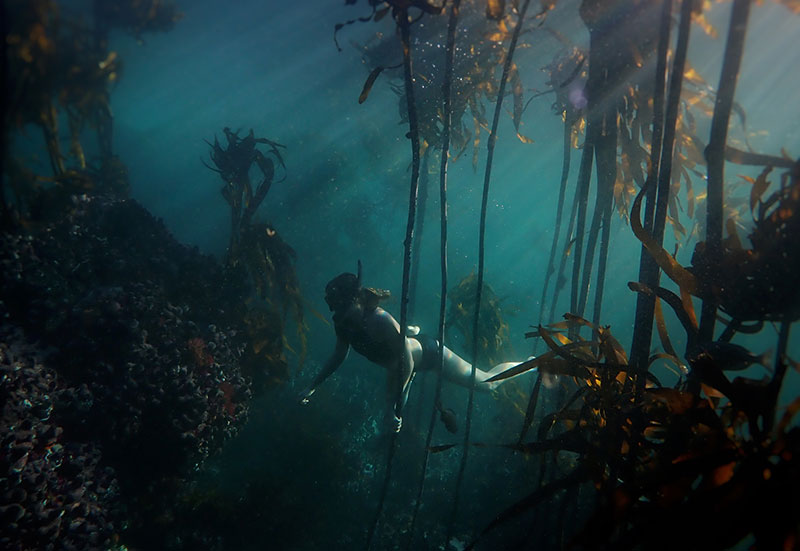
“You are being given the key to a new experience of the world. Illustrating and describing these tiny creatures is my way of exploring and sharing a wonder in our environment. So often overlooked and understudied, the microworld is fundamental in the functioning of the natural world. This is especially true of the marine world where one drop of seawater from False Bay revealed under a microscope appears as busy as a coral reef,” she said.
“Each organism, some of which could be mistaken for a grain of sand, and each microstructure is revealed in its place in the natural world through a microscope lens. I’m sure every person who looks through a microscope for the first time feels the same. A feeling similar to putting on a mask and snorkel for the first time and diving into the ocean with the ability to see the mass of teaming life beneath the surface.”
“And by publishing [you] become part of a network of enquiring minds, bringing their expertise to tackle questions of biodiversity and improving your work.”
A highlight of Brokensha’s honours research, after she had submitted her thesis, was to present her work on the hermit tanaids at the international The Crustacean Society Mid-Year Meeting in Hong Kong, among world-renowned crustacean experts.
Landschoff explained: “It is unusual for an honours student to participate at international conference level, but I knew that in order to go ahead and publish this work we needed international help. I knew from my own experience that it’s crucial to visit such meetings as a student project has different requirements compared to a research article in a peer-reviewed scientific journal.
“We had to ʻup the gameʼ. Luckily, we had used modern techniques of nano- and micro-CT scanning and these caught the attention of expert researchers at the conference.”
The experience was invaluable, Brokensha said.
“And by publishing [you] become part of a network of enquiring minds, bringing their expertise to tackle questions of biodiversity and improving your work.”
Scratching the surface
But her study only scratches the surface of understanding the hermit tanaid and its part in marine ecological functioning, she said.
“The rediscovery of Pagurapseudes dentatus after more than six decades demonstrates how much there is still to explore and understand in the ocean,” said Brokensha. “Picking up a handful of apparent broken shells from under a rock in False Bay revealed a multitude of miniature sea snails, hermit crabs and the forgotten hermit tanaid. I wonder what’s next?”
For her master’s degree she has undertaken a study on the South African stomatopods, commonly known as mantis shrimps.
“I learnt so much from studying a single tiny creature [the hermit tanaid]. My taxonomic expertise is now focused on the mantis shrimp of South Africa, a truly charismatic group of crustaceans. We shall see what new insights there are to discover.”
 This work is licensed under a Creative Commons Attribution-NoDerivatives 4.0 International License.
This work is licensed under a Creative Commons Attribution-NoDerivatives 4.0 International License.
Please view the republishing articles page for more information.
Research & innovation
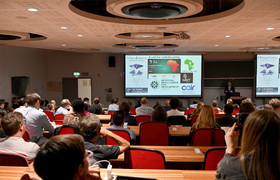

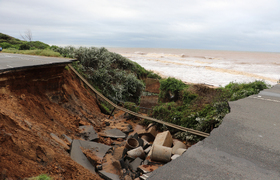


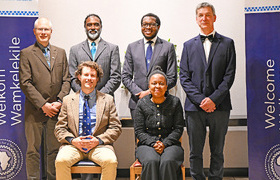






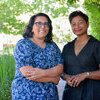
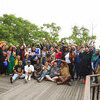

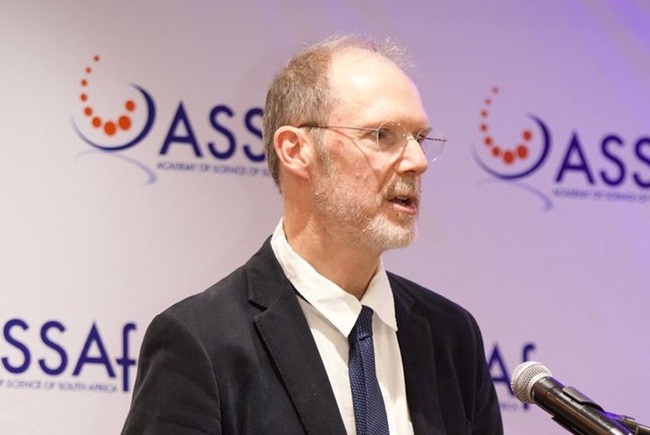



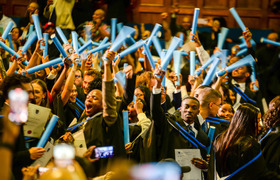
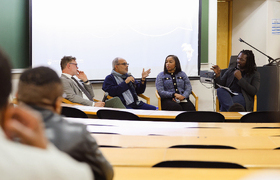
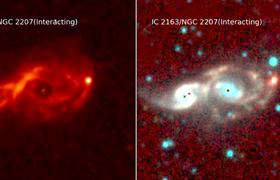



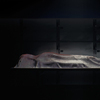



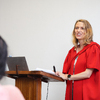




.jpg)

